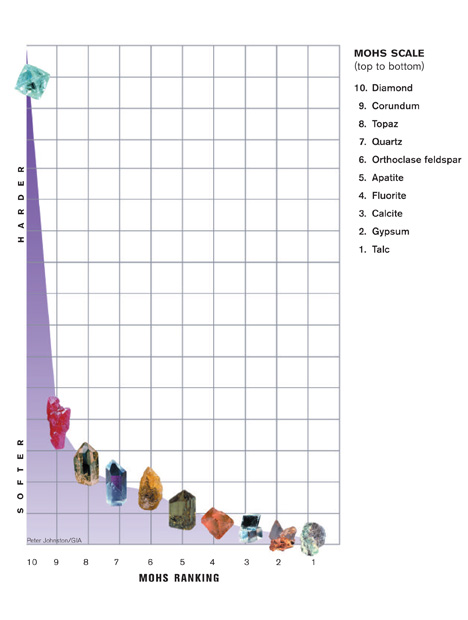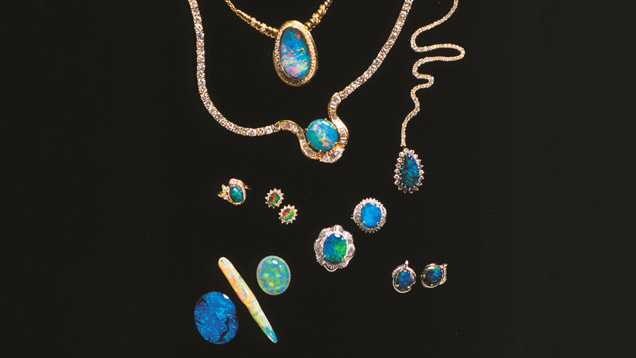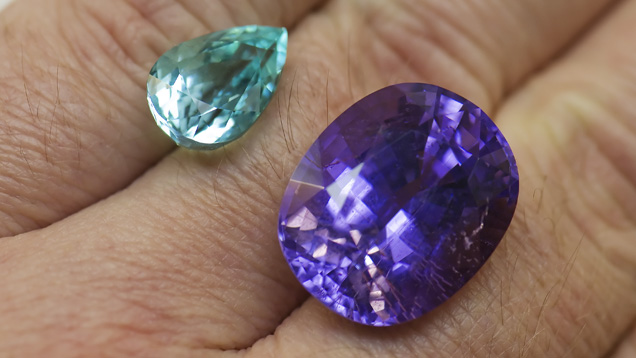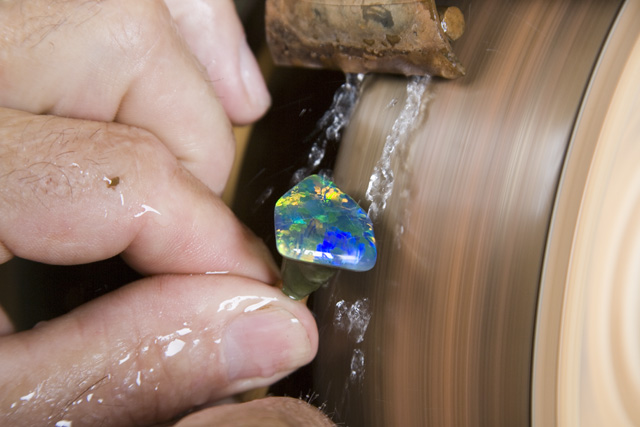Link 1: https://www.gia.edu/opal-care-cleaning Link 2: https://www.gia.edu/tourmaline-care-cleaning
Opal

Hardness and toughness
Gem and mineral hardness is measured on the Mohs scale. The numbers are based on the relative ease or difficulty with which one mineral can be scratched by another. But the Mohs scale is deceptive. The steps between the minerals are not evenly spaced. For example, a diamond is only one number away, but it’s many times harder than gems in the corundum family.
Opal hardness is variable depending on its exact composition and formation conditions and ranges from 5 to 6.5 on the Mohs scale. Its toughness is very poor to fair, making opal a gem that is suitable for jewelry but requires care when wearing so as to not scratch or break the stone.
Stability
Opal is generally stable, but the heat from intense light can cause fracture lines called “crazing.” High heat or sudden temperature changes can also cause opal fracture. Opal is attacked by hydrofluoric acid and caustic alkaline solutions.
Treatments
Opals can be treated by impregnation with oil, wax, or plastic, and by surface, modifications called sugar treatment and smoke treatment.
Cleaning
The only safe way to clean opal is with warm, soapy water.

Tourmaline

Hardness and toughness
Gem and mineral hardness is measured on the Mohs scale. The numbers are based on the relative ease or difficulty with which one mineral can be scratched by another. But the Mohs scale is deceptive. The steps between the minerals are not evenly spaced. For example, a diamond is only one number away, but it’s many times harder than gems in the corundum family.
Tourmaline ranks 7 to 7.5 on the Mohs scale. Its toughness is considered Fair.
Stability
Tourmaline is generally stable to light and isn’t affected by exposure to chemicals, but heat can damage a tourmaline. High heat can alter the color, and sudden temperature change (thermal shock) can cause fracturing.
Some tourmalines might have been treated to improve their color. The two most important tourmaline treatments are heating and irradiation.

The stone on the left was heat-treated to give it its desirable Paraíba color. The violetish stone on the right couldn’t be heated because it contains liquid inclusions. – Courtesy Nomad’s CompanyChanges resulting from heat treatment are stable and undetectable. Gems with abundant liquid inclusions can’t withstand the heat treatment.
Color changes due to irradiation can fade with exposure to heat or bright light.
Cleaning
Warm, soapy water is the best method for cleaning the tourmaline. The use of ultrasonic and steam cleaners is not recommended.

